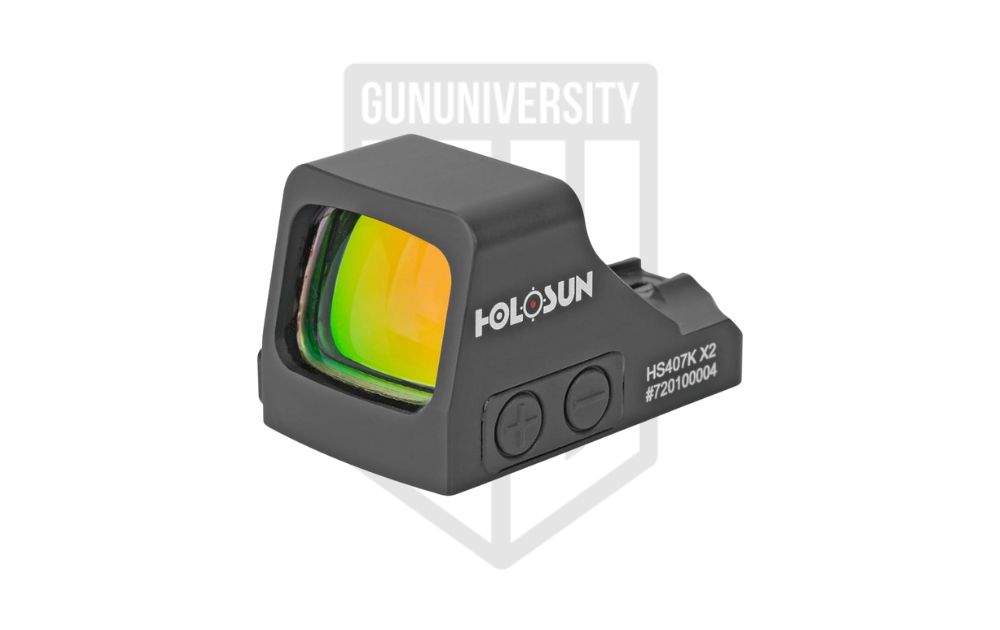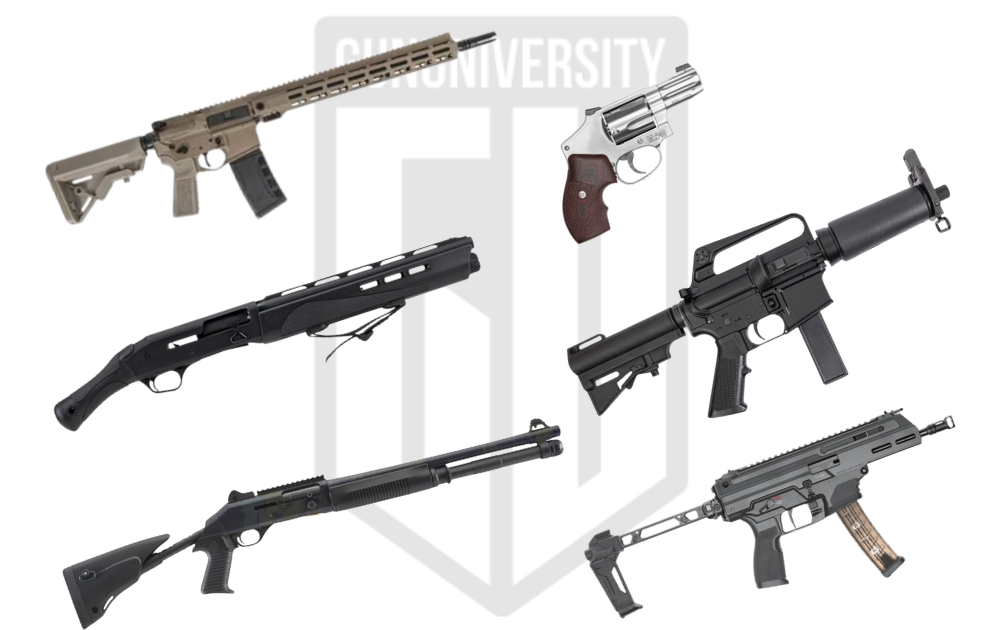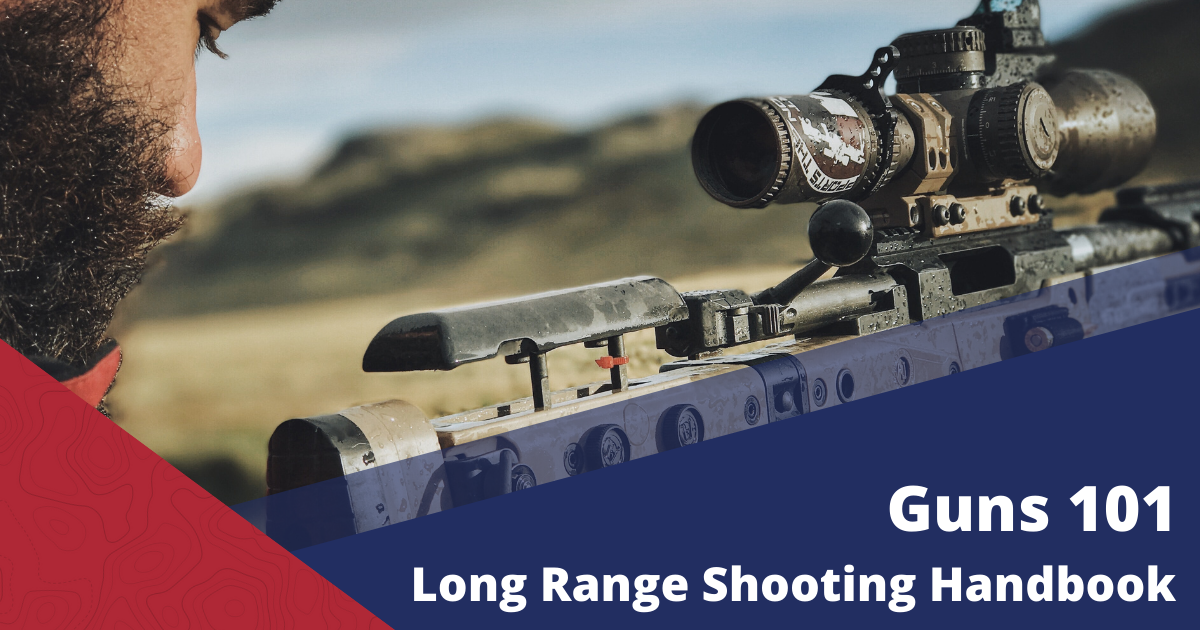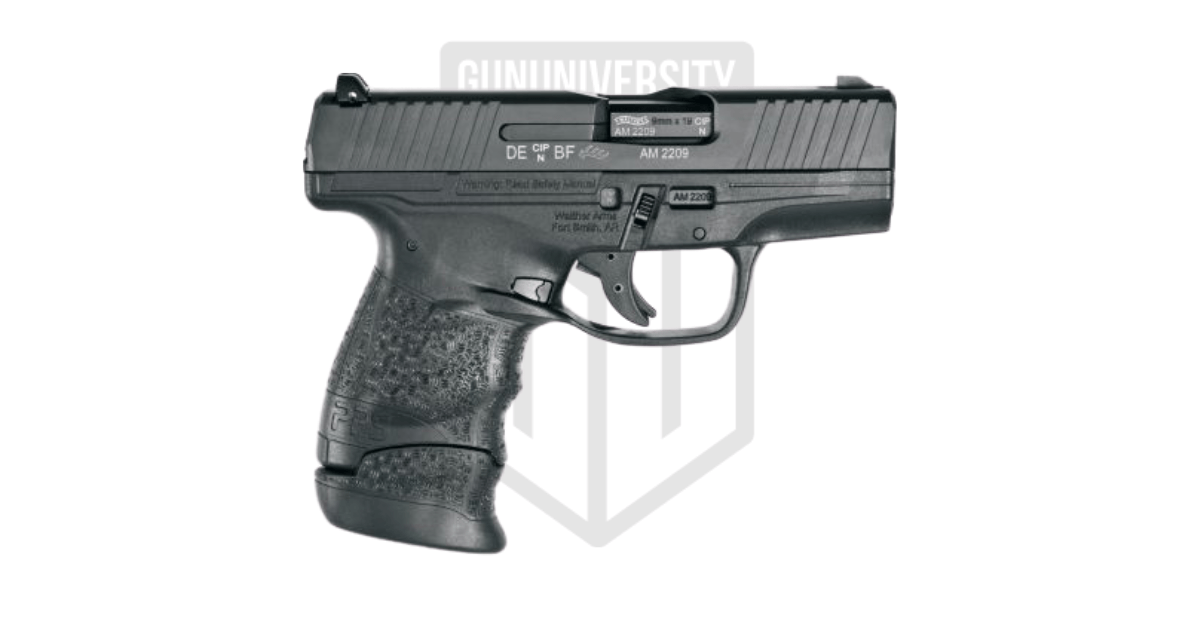Holosun 407K vs 507K
Holosun hit the optics market with a hammer. It shook things up and left companies struggling to keep up. They have refined the micro compact market through two optics, the 407K and 507K. These two small pattern optics are designed for concealed carry-sized firearms but have made their way to other genres through pure force.
A lot of folks are asking what the difference is. It’s not exactly immediately apparent, but fret not—we’re here to break it down for you.
What They Have in Common
The 407K and 507K have almost everything in common. Both are micro red dots that use the Holosun K Pattern, a slightly modified RMSc pattern. They’re designed for subcompact and micro-compact pistols. The K and RMSc cut has become the dominant optics cut for guns like the P365, the Hellcat, and many more.
Holosun helped create one of the first modern and viable micro red dots for guns this size. Shield sights were fine but not up to modern standards. The 407K and 507K offered an affordable but very capable micro red dot. That’s not the only commonality between the dots.
Even looking at the two doesn’t reveal any differences. They are identical—the same overall size, the same window size, the same buttons, the same brightness levels, just the same everything. The closest thing you get to telling the difference is the model number on the side of the optic.
There are only two differences that are worth mentioning, which come down to the reticles and the price.
The Big Difference – Reticles
The biggest difference is in the reticle. The 407K series is the simpler optic, and it has the simpler reticle. It’s a 6 MOA red or green dot, depending on which model you choose. That’s simple, effective, and a decent size for most shooters and most subcompact firearms.
The 507K gives you options. The standard model allows you to pick between a small, 2 MOA dot or a 32 MOA dot with a 2 MOA in the center. That’s double the options and adds a bit of versatility to the dot.
There is also a 507K ACSS Vulcan. This model features a 3 MOA dot in the center with a 230 MOA segmented circle. You can’t see the circle unless you look through angles where you can’t see the 3 MOA dot. It acts as a corrective device for finding your dot when presenting the optic.
That’s the big difference between the two optics.
Price
There is a difference in price, but it’s hardly what I’d call a big difference. The 407K seems to retail for around 220 to 230 dollars. The 507K seems to sit comfortably at around 300 dollars. The 507K Vulcan is the most expensive model, at around 340ish dollars, depending on the retailer.
Different Reticles – Different Purposes
You might wonder what the big deal is with different reticles. I’d like to explain what each reticle does and what they can do for the end user. This might help shine a light on which optic you decide to purchase.
I’d like to illustrate and point out a few things you might not consider when optics shopping.
Dots Only – 2 MOA vs 6 MOA
Dots are only the basic red dot sight. It’s functional, easy to see, and uncomplicated. A 2 MOA dot covers up two inches worth of target at 100 yards, and a 6 MOA dot covers six inches of target at 100 yards. The 6 MOA dot is considerably larger. One could argue the 2 MOA dot is a more precise option.
It is by size alone, but does it matter? For a handgun, especially a small handgun, the dot hardly covers any targets at handgun ranges. Smaller dots make sense for a rifle, especially with a magnifier. For a handgun, it’s a big meh from me.
Someone suffering from astigmatism may find the smaller dot easier to use. Astigmatism can cause a red dot to bloom, so the smaller the dot, the smaller the bloom. Additionally, dudes who shoot under night vision may use a smaller reticle, so it’s also less likely to bloom and be too big.
The 6 MOA dot has the benefit of being easier to see. It’s a nice big red dot that’s easy to see. It makes a lot of sense on a smaller gun when you consider the range; you’re likely to use the dot. When it comes to fast shooting, you’ll see a glimpse of red; the bigger the glimpse, the more confidence you have in hitting the target.
The Circle and Dot
The circle and dot reticles are massive and feel crowded to me. For close-range use, they obscure a lot of the target. By long-range, I mean at 50 yards, it can feel tough to see a smaller target on a handgun. However, up close, they admittedly shine bright and big.
The circle and dot are a lot like a snub nose front sight. It’s big, easy to see, and covers a lot of your target. It’s useable on a small gun, but I’d prefer the 6 MOA dot in most cases. The circle and dot reticle are another option for shooters with astigmatism. My wife, for example, has a much easier time using the circle and dot reticle due to her astigmatism.
Additionally, the circle and dot reticle can be great off a handgun. You could mount these optics to a shotgun or as a backup optic on a rifle. In those roles, they work well. Mossberg has begun cutting their shotguns with a footprint to accommodate K-model Holosuns. The 32 MOA circle will work super well with buckshot and shotguns.
I use a 507K on my 940 Pro Tactical, and with Federal Flitecontrol, I know that within home defense distances, all of my buckshot will land inside that 32 MOA reticle. In that role, I love the extra size of the dot.
The Vulcan Reticle
The Vulcan reticle provides an exceptional red dot for new shooters. The center dot is a standard 3 MOA dot. If you look directly through the optic, that’s all you see. What you don’t see is the 230 MOA circle, which can only be seen if you look through the optic the wrong way.
When you draw and present the gun, optimistically, you want to see the 3 MOA dot and nothing else. However, if you draw and don’t see the dot, your presentation might be messed up, and you’ll have to move the gun. Which direction do you move? With the Vulcan, it’s no longer a guess.
If you see the top of the 230 MOA segmented circle, you know you must push the gun up to bring the dot in focus. A minor movement can be a big deal. The circle lets you see what direction you need to adjust to get the dot in your eyes. As a new shooter, your presentation will require refinement, and this dot will help you learn and get your dot on target.
What the 407K and 507K Offer
Ultimately, either option offers a robust red dot sight well suited for defensive and competitive use. The 407K and 507K are lightweight, rugged, and small-profile red dot sights that have earned an excellent reputation for durability and reliability.
The differences are due to the reticles and price. If you just need a robust red dot, the 407K will save you some money. If you need multiple reticles, the 507K will have you covered. Both optics feature the famed shake-awake technology, easy-to-use buttons, side-loading batteries, and more modern touches.
Just figure out what reticle you need and make your decision from there.
User Manuals and More…
Recent Posts
December 15, 2025
December 15, 2025
December 12, 2025
December 12, 2025






